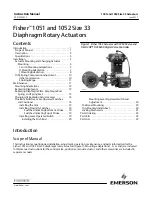
X
Close the driver's door.
X
warning lamps at a suitable distance.
Observe legal requirements.
Battery
Important safety notes
Work on the battery, e.g. removing or instal-
ling, requires specialist knowledge and the
use of special tools. Therefore, always have
work on the battery carried out at a qualified
specialist workshop.
If ABS is malfunctioning, the wheels could
lock when braking. This limits the steerability
of the vehicle when braking and may increase
the braking distance.
G
WARNING
During the charging process, a battery produ-
ces hydrogen gas. If a short circuit occurs or
sparks are created, the hydrogen gas can
ignite. There is a risk of an explosion.
R
Make sure that the positive terminal of a
connected battery does not come into con-
tact with vehicle parts.
R
Never place metal objects or tools on a bat-
tery.
R
It is important that you observe the descri-
bed order of the battery terminals when
connecting and disconnecting a battery.
R
When jump-starting, make sure that the
battery poles with identical polarity are
connected.
R
It is particularly important to observe the
described order when connecting and dis-
connecting the jump leads.
R
Never connect or disconnect the battery
terminals while the engine is running.
G
WARNING
Electrostatic build-up can lead to the creation
of sparks, which could ignite the highly explo-
sive gases of a battery. There is a risk of an
explosion.
Before handling the battery, touch the vehicle
body to remove any existing electrostatic
build-up.
G
WARNING
Battery acid is caustic. There is a risk of injury.
Avoid contact with the skin, eyes or clothing.
Do not inhale any battery gases. Do not lean
over the battery. Keep children away from
batteries. Wash battery acid immediately with
water and seek medical attention.
!
Have the battery checked regularly at a
qualified specialist workshop.
Observe the service intervals in the Service
Booklet or contact a qualified specialist
workshop for more information.
!
Always have work on the battery carried
out at a qualified specialist workshop.
Should it, in exceptional circumstances, be
absolutely necessary to disconnect the bat-
tery yourself, please observe the following:
R
switch off the engine and remove the
key. Check that all the indicator lamps in
the instrument cluster are off. Otherwise,
you may damage electronic components
such as the alternator, for example.
R
first, disconnect the negative terminal
clamp, followed by the positive terminal
clamp. Never swap the terminal clamps.
The vehicle electronics may otherwise be
damaged.
R
on vehicles with automatic transmission,
the transmission is locked in position
P
after disconnecting the battery. The vehi-
cle is secured against rolling away. You
can then no longer move the vehicle.
The battery and the cover of the positive
terminal clamp must be fitted securely dur-
ing operation.
!
Have the batteries checked and, if neces-
sary, replaced at a qualified specialist
workshop every two years or at least every
20,000 km.
160
Battery
Breakdown assistance
Summary of Contents for G-Class
Page 1: ...G Class Owner s Manual Nur f r internen Gebrauch For internal use only...
Page 4: ......
Page 19: ...Cockpit 18 Instrument cluster 19 Centre console 21 17 At a glance...
Page 50: ...48...
Page 58: ...56...
Page 78: ...76...
Page 86: ...84...
Page 128: ...126...
Page 141: ...Useful information 140 Engine compartment 140 Service 145 Care 147 139 Maintenance and care...
Page 154: ...152...
Page 174: ...172...
Page 188: ...186...
Page 205: ...203...
Page 206: ...204...
















































